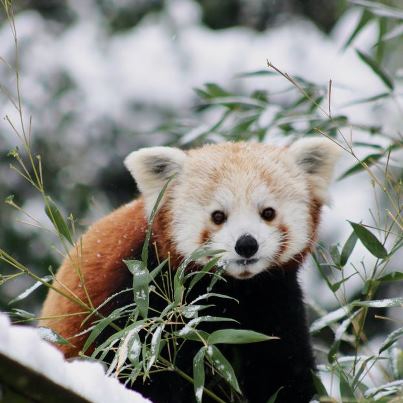When we think of the panda, we inevitably think of the giant panda, the big black and white bear. This animal from the Ursidae family was first seen by a westerner in 1869, well after the red panda which was discovered in the early 19th century.
These two animals are physically different from each other and do not belong to the same family. So why do they have the same name? One of the first names of the red panda was “Nigalya poonya”. These Nepalese words mean “bamboo eater”. Does it remind you of something? Indeed, it is the main food of the giant panda!
Thus, about fifty years after the discovery of the little «Nigalya poonya», it seemed logical that the big black and white bear wears the same name! He became the great «Nigalya poonya». This gives us etymologically: «small bamboo eater» and «big bamboo eater»!
Gradually, we kept only the end of the expression: «poonya», which gradually turned into a panda.
Today, these animals have several common names…
Small panda is also called: red panda, bright panda, firefox.
Giant panda is also called: panda bear (big bear-cat, literally, in China).
A few anecdotes:
- The year of the discovery of the giant panda (1869) was also the year when a red panda was first put in captivity at the London Zoo.
- Like the giant panda, the red panda was once classified in the Ursidae family, but genetic studies have shown that they are not related.
- These two species may occupy the same territories in China, although the range of the small panda is larger and at higher altitudes.
- If both small and giant pandas eat bamboo, they do not always enjoy the same parts of the plant. Indeed, the red panda is content with the most tender leaves while the giant panda also eats the stems thanks to its powerful jaw.
- These two animals have one thing in common: they both have a bony outgrowth on their front legs, which serves as their sixth finger! Kind of like the opposable thumb in primates! This adds an additional challenge to scientists in classifying these species.
- Pandas giant and small are both solitary and couples only form for the breeding season.
- While the two pandas have a highly developed sense of smell, the giant panda does not have a very good view, unlike the red panda, and so it uses more of its hearing to locate itself.


